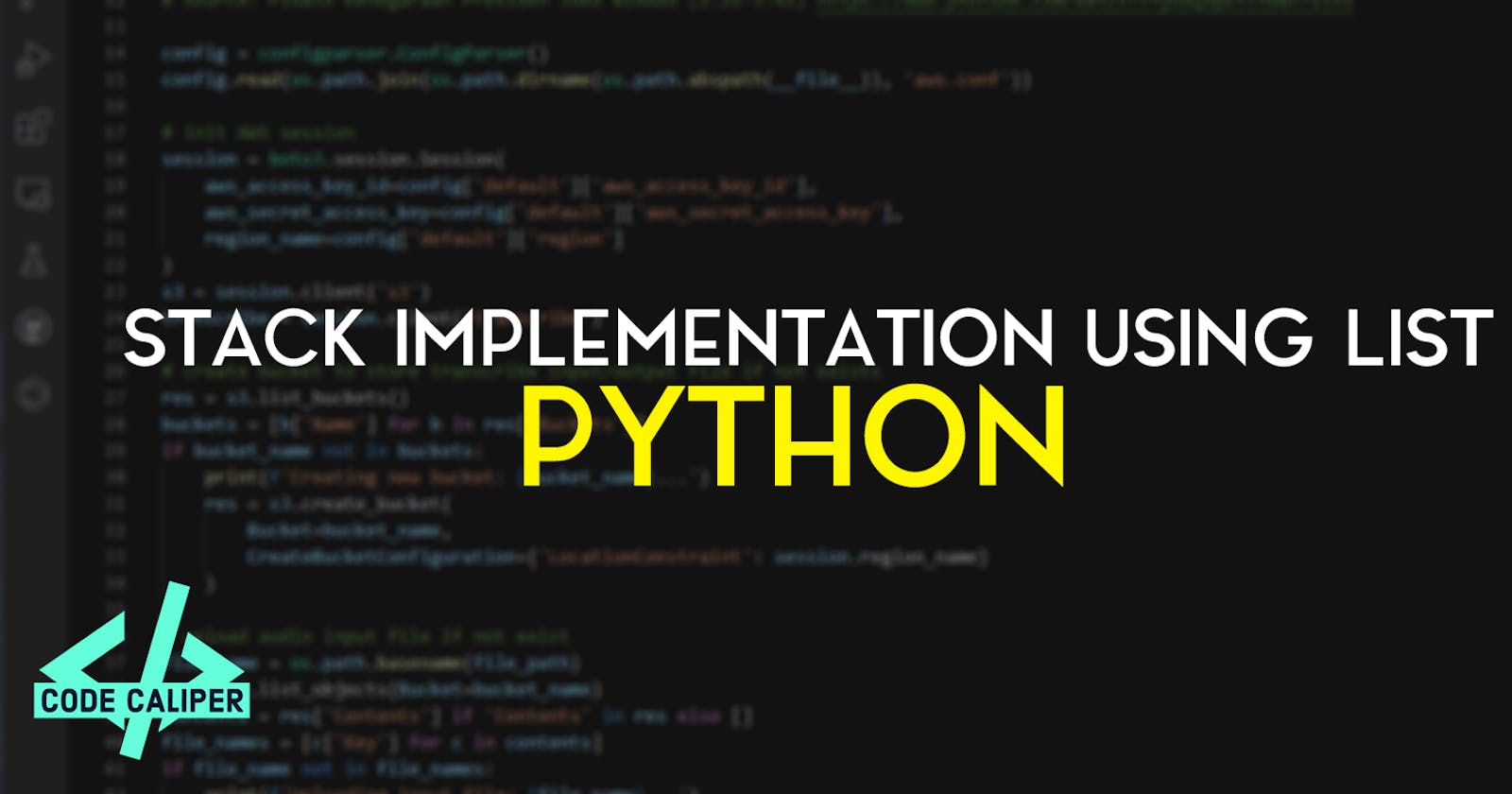Table of contents
No headings in the article.
A stack is a linear data structure that follows a particular order in which the operations are performed. The order may be LIFO (Last In First Out) or FILO (First In Last Out).
In this tutorial, we will be implementing a stack that follows the LIFO order using Python's list data structure.
Let's start by defining a function isempty() which checks whether the stack is empty or not.
def isempty(stk): # checks whether the stack is empty or not
if stk==[]:
return True
else:
return False
The isempty() function takes in a stack as an argument and checks if it is equal to an empty list. If it is, it returns True, else it returns False.
Next, let's define a function push() which allows additions to the stack.
def push(stk,item): # Allow additions to the stack
stk.append(item)
top=len(stk)-1
The push() function takes in a stack and an item as arguments. It adds the item to the stack using the append() method and updates the value of the top variable to the index of the item added.
Now, let's define a function popu() which allows deletions from the stack.
def popu(stk):
if isempty(stk): # verifies whether the stack is empty or not
print("Stack Underflow")
else: # Allow deletions from the stack
item=stk.pop()
if len(stk)==0:
top=-1
else:
top=len(stk)
return item
The popu() function first checks if the stack is empty using the isempty() function we defined earlier. If it is empty, it prints "Stack Underflow". If not, it removes the top element from the stack using the pop() method and updates the value of top accordingly.
Next, let's define a function display() which displays the elements in the stack.
def display(stk):
if isempty(stk):
print("Stack is empty")
else:
top=len(stk)-1
print("Elements in the stack are: ")
for i in range(top,-1,-1):
print (stk[i])
The display() function first checks if the stack is empty using the isempty() function. If it is, it prints "Stack is empty". If not, it traverses the stack from the top to the bottom and prints the elements.
Now, let's define the main driver code that allows us to perform various stack operations.
#------------------Driver code-------------------------
stk=[] # Emptry list as empty stack
top=-1
while True:
print("Enter your choice:\n1.PUSH\n2.POP\n3.Display\n4.Exit")
ch=int(input()) # <-user coice
if ch==1: #PUSH in stack
k=input("Enter element to insert: ")
push(stk,k)
Here, we are prompting the user to enter an element to insert into the stack and then calling the push() function with the stack and the element as arguments.
Next, let's handle the case where the user wants to remove an element from the stack.
elif ch==2: #POP in stack
k=popu(stk)
print(k," is popped")
Here, we are calling the popu() function with the stack as an argument and storing the returned value in the variable k. We then print the value of k along with the message " is popped".
Now, let's handle the case where the user wants to display the elements in the stack.
elif ch==3: # Display Stack
display(stk)
Here, we are simply calling the display() function with the stack as an argument.
Finally, let's handle the case where the user wants to exit the loop.
elif ch==4: #Exiting from loop
break
Here, we are simply breaking out of the loop.
And that's it! We have successfully implemented a stack in Python.
I hope this tutorial was helpful in understanding the concepts of stack and how to implement it in Python. If you have any questions, feel free to ask.

